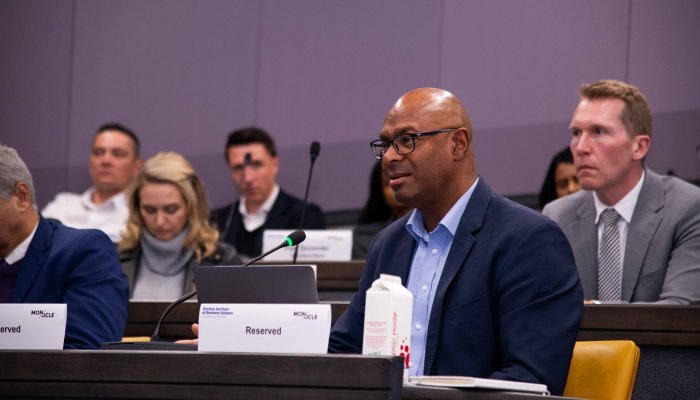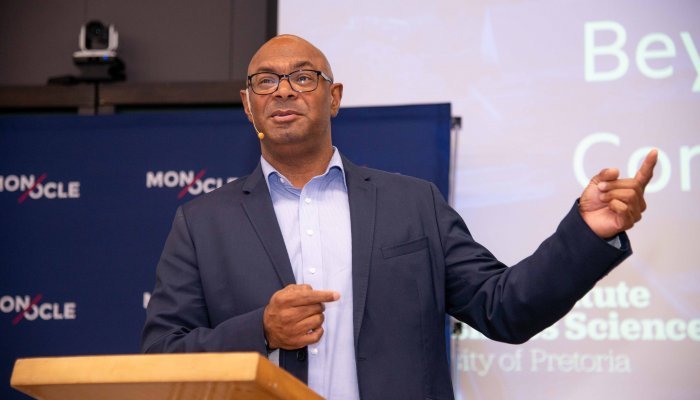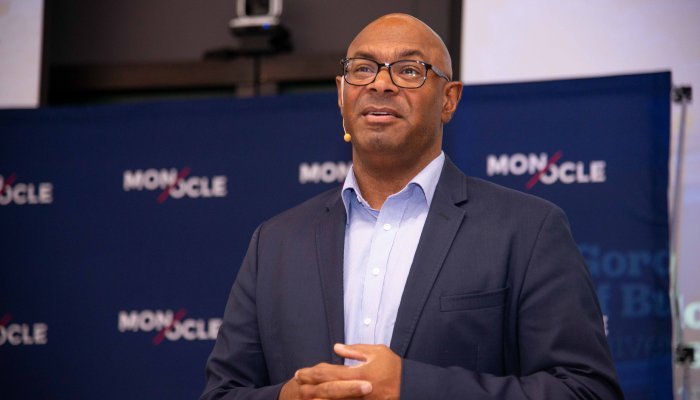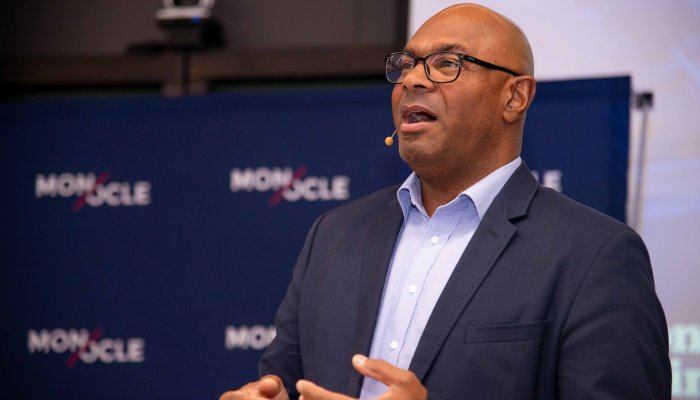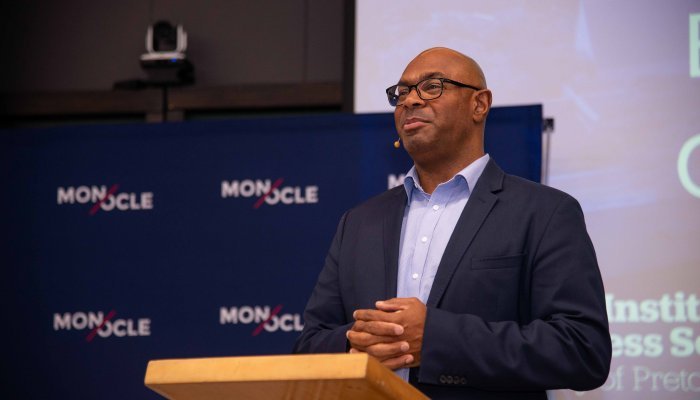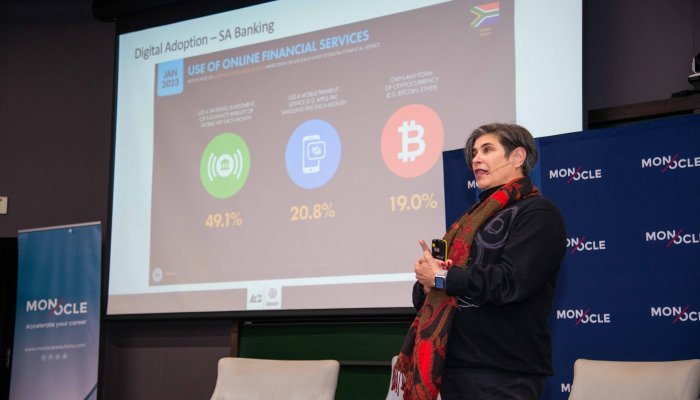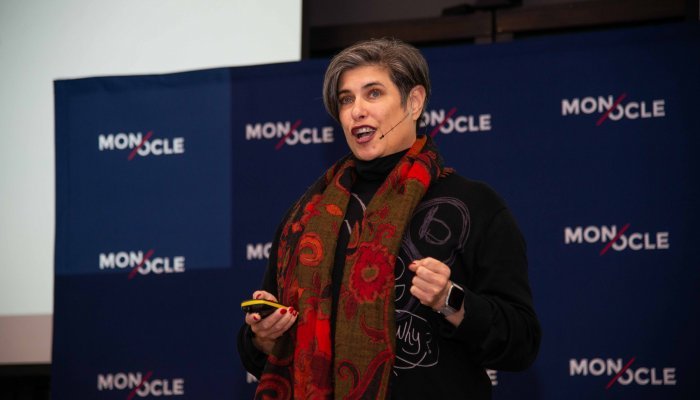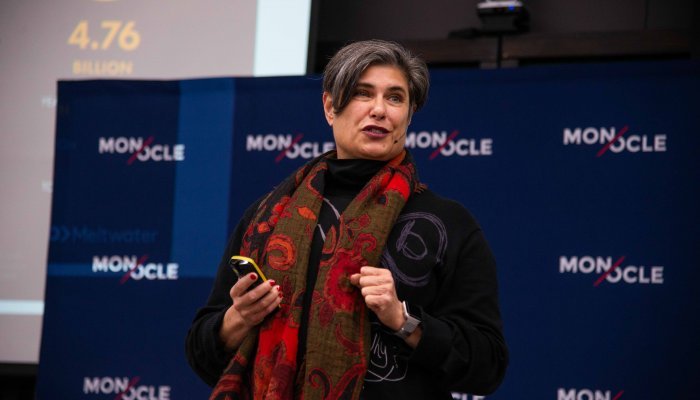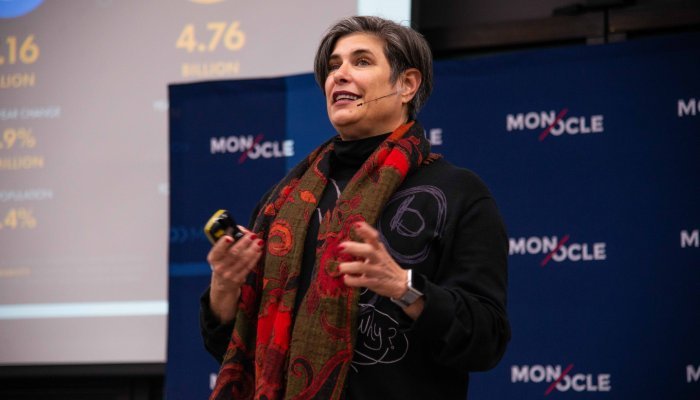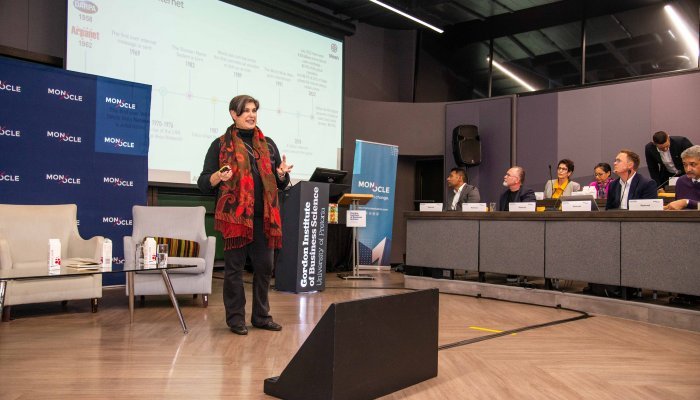As the operating models of South Africa’s banks shift to encompass digital delivery and customers demand varied services with enhanced technologies, banks have to adjust their strategies to maintain a leading position. Emerging risks, including South Africa’s recent grey-listing, a volatile global environment, and lower than expected economic growth add to the complexity the institutions face.
Increasing geopolitical risks and the efforts of certain developing economies to decouple from advanced economies have meant much of banking has become an attempt to quantify and mitigate both known and unknown risks, essentially, attempting to see around corners.
Risky business
Speaking at a recent GIBS conference on the future of banking, Reserve Bank Deputy Governor Kuben Naidoo explained that banking is a fragile business, hence it is heavily regulated.
“It is incumbent upon bankers to understand the risks and to have a strategy to mitigate them,” he said in his keynote address.
The March 2023 collapse of Silicon Valley Bank (SVB) in the US demonstrated the fragility of banks and the speed at which they can fail in today’s digital world, he said. The demise of SVB is regarded as the largest bank run in human history, after $43bn was withdrawn from the bank in the space of 20 minutes. Speculation is rife that private messages distributed via social media channels urged depositors to withdraw their money from the bank as soon as they could – leading to SVB’s collapse without a single queue forming outside the bank.
Naidoo categorised the risks facing the financial services industry as:
- Business cycle risks that banks have largely factored in and are able to manage;
- unexpected events; and
- slow, creeping risks.
The first, business cycles’ ups and downs, such as “commodity booms and political blunders,” could be considered as “back pain”. By and large, banks know how to manage these cycles, he explained.
Unexpected events, or “heart attacks”, include occurrences such as the Covid-19 pandemic, a cyber-attack on the banking system, or a sovereign debt default. The regulatory framework is designed to largely prevent these occurrences through checks and balances.
However, Naidoo warned that in the event of a sovereign default, South Africa would be “in big trouble”. The country would likely experience a very deep recession that would severely affect the cost of credit in the market. While the probability of such an event is increasingly low risk, “the chance is not zero”.
Finally, he termed slowly accumulating dangers “cancers”. An example of this was South Africa’s low growth environment and persistently high levels of unemployment. The regulatory system is not well designed to manage these risks. “These eat at the fabric of our society,” Naidoo said. He advised banks to devise a strategy to manage another 10 years of 0% growth.
In the bank’s half-year results to end June 2023, Absa highlighted “geopolitical concerns, the Russia-Ukraine conflict and tension between West and China” and said these appear “likely to impact outlook for some time”.
“The macro scenario is always going to be complex and challenging, and the South African banking system must get used to that reality. Banks must manage complexity and do what is within their control,” said Arrie Rautenbach, CEO of Absa Group.
He insisted that banks have a key role to play in stimulating the economy. “Banks contribute to the stability and growth of the economy over time,” he said. The South African banking sector had “unheard-of” levels of competition when considered against its peers, and the country has one of the most dynamic regulatory environments, he added.
Chief operating officer of Standard Bank Group Margaret Nienaber said the biggest risk to banks in South Africa is unemployment, while global banks fear the prospect of a cyber-attack. She argued that it is our collective responsibility to solve the global leadership crisis and tackle increasing instability.
Peter Attard Montalto, the managing director of emerging markets financial research at consulting house Intellidex spoke about the extreme tail risks facing South African banks. These include the 2024 national elections, the prospect of a national grid collapse and subsequent blackout, and the climate crisis.
“Banks are not separate from the broader political economy. Rather, they are part of a common ecosystem and can assist with the mitigation of broader risks,” Montalto said.
New opportunities – energy and technology
Energy and the broader infrastructure environment, both of which require substantial investment, are a risk to the country and to business as a whole. However, they also present an opportunity for financial services, according to Absa’s Rautenbach.
“South Africa is coming off a low base and banks can play a key part in growth. Public-private partnerships (PPPs) are needed to deal with structural challenges. The next two years will see an explosion of innovation in energy infrastructure, as well as in water and rail, which remain challenges.”
The risk of a blackout, or total collapse of the national Eskom grid, has a very low probability, noted Montalto. However, such an event would be “catastrophic”. While the mitigation potential for such a likelihood is moderate, he said the tail risks of such an occurrence can be complex. “Serious thought is needed for very high-impact but low-probability events.”
“We are excited about the energy story,” Nienaber said. “Banks are responsible for finding funding opportunities and the financial services sector can turn energy into a big opportunity. Together we can pull together as the African continent and make it work.”
CEO and founder of TymeBank Coen Jonker said transformational operating models can move the boundaries of what business can do in society. Tyme’s innovative hybrid model combines digital banking with physical services, making banking accessible to individuals across all economic backgrounds.
While large, traditional banking institutions are resourceful and have enormous capacity to do new things and make incremental improvements, Jonker said it is difficult for them to be revolutionary. “It simply isn’t possible to do something fundamentally new under the same brand, on the same technology stack and within the same risk and compliance environment.
Grey-listing – an opportunity for collaboration
South Africa’s grey-listing in February by the Financial Action Task Force (FATF), a global financial crime watchdog, for not fully complying with international standards around the prevention of money laundering, terrorist financing and proliferation financing could cause a decline in foreign direct investment into South Africa and increase the compliance burden on banks.
The length of time the country remains on the grey list depends on how quickly it can resolve the shortcomings listed by the FATF, subject to regular reviews and updates. South Africa has committed to resolving the remaining eight strategic actions by January 2025.
“Our global competitiveness is crucial, as is our reputation,” Rautenbach said in response to the matter. He added that getting the country off the FATF’s grey list needed to be dealt with as a matter of urgency: “South Africa has to defend its competitiveness, or our access to global markets and funds gets eroded.”
“It will be extremely difficult to get off the list, and we are aware that there is a lot of work to be done,” he added. “However, we must all be constructive, and stay absolutely committed.”
Climate risk and sustainable finance
Extreme climate change has the potential to affect all the bank risk categories: liquidity risk, operational risk, market risk and credit risk.
Intellidex’s Montalto described climate and extreme weather events as “high probability, with bad outcomes and low mitigation potential”. Of particular concern is the fact that South Africa’s average temperature could rise by 3.5° Celsius by the middle of the century, against the global average of 2°. This threat requires adaptation and resilience from all sectors, including financial services.
“The probability of extreme weather events has changed, and the tail risks are dynamic,” he added.
Head of sustainable finance solutions at Nedbank Arvana Singh said green bonds, impact investing and sustainability-linked loans were some examples of green innovation in the finance sector. “These use intentional restructuring to drive positive outcomes and to support societal and economic growth,” she said. However, the challenge remains as to how to measure the impact of these initiatives.
The head of sustainable finance at Standard Bank, Sasha Cook, said likely upcoming areas of focus and product innovation include blue finance, which places an emphasis on marine or water conservation, biodiversity and carbon financing.
“Climate and decarbonisation are massive societal risks, and the most vulnerable parts of society are impacted the most. While we must comply with global goals, the local context is also important. We need credible, independent frameworks so as to align with market best practice.”
KEY TAKEAWAYS
- South Africa’s banking and financial services sectors have a long-standing, world-class reputation. As operating models shift to digital delivery and a volatile global environment, lower than predicted economic recovery adds to the complexity that the institutions face. Banks have to adjust their strategies to maintain their leading position.
- South Africa’s low growth environment and persistently high levels of unemployment are like a cancer that eat at the fabric of our society. The regulatory system is not well designed to manage these risks.
- Banks have a key role to play in stimulating the economy. Transformational operating models can move the boundaries of what business can do in society.
- Extreme climate change has the potential to affect all the bank risk categories: liquidity risk, operational risk, market risk and credit risk.




